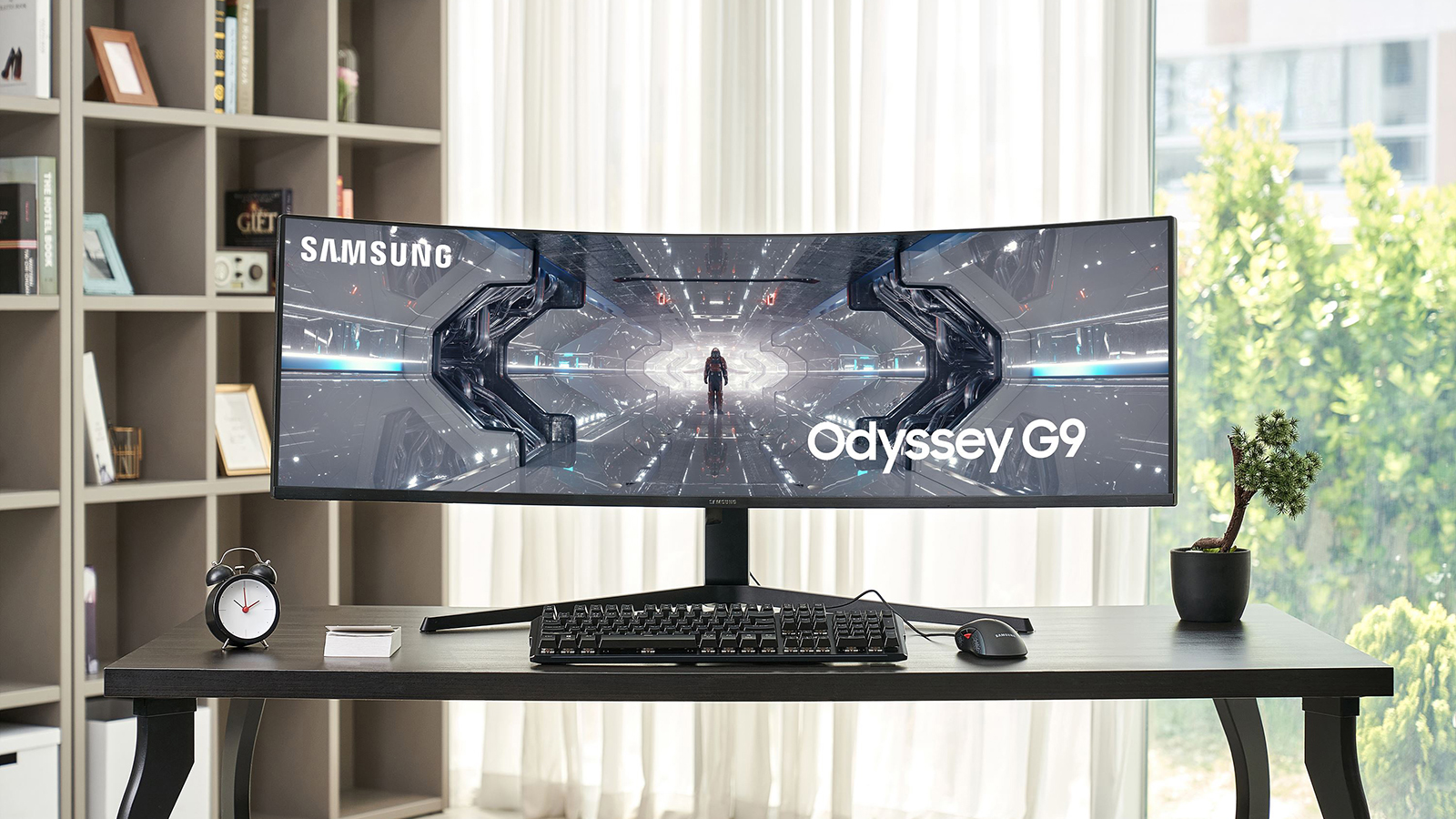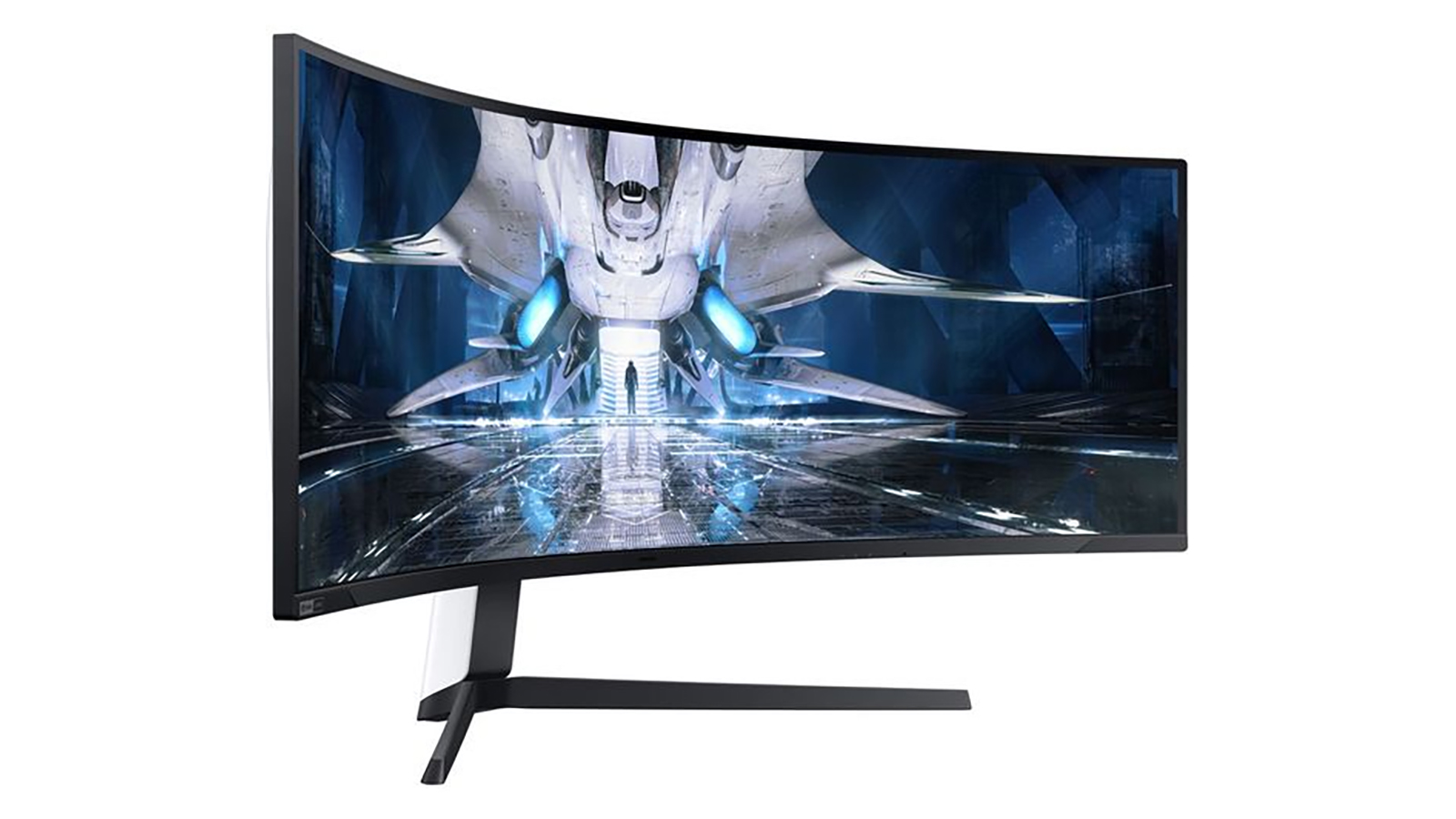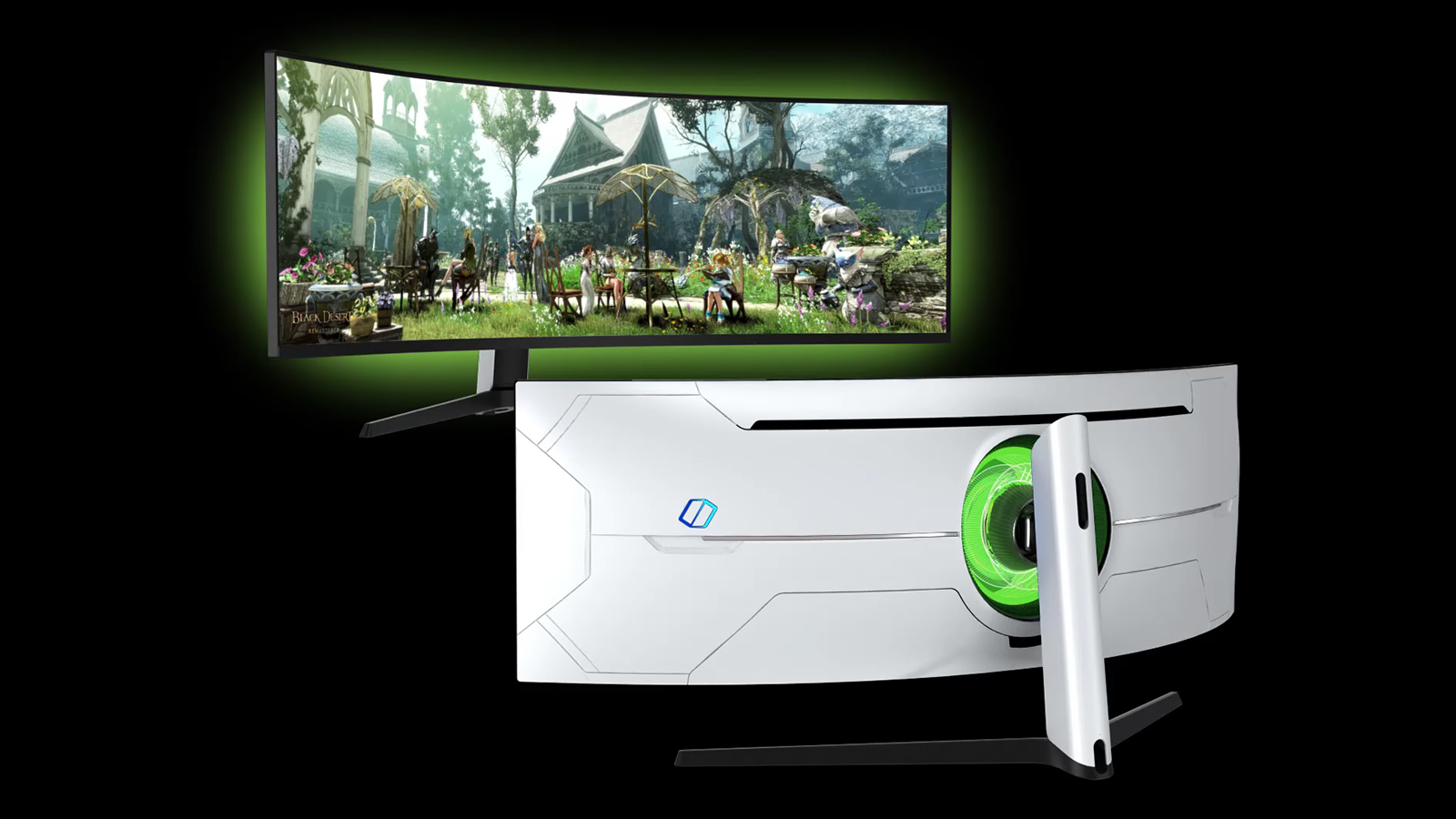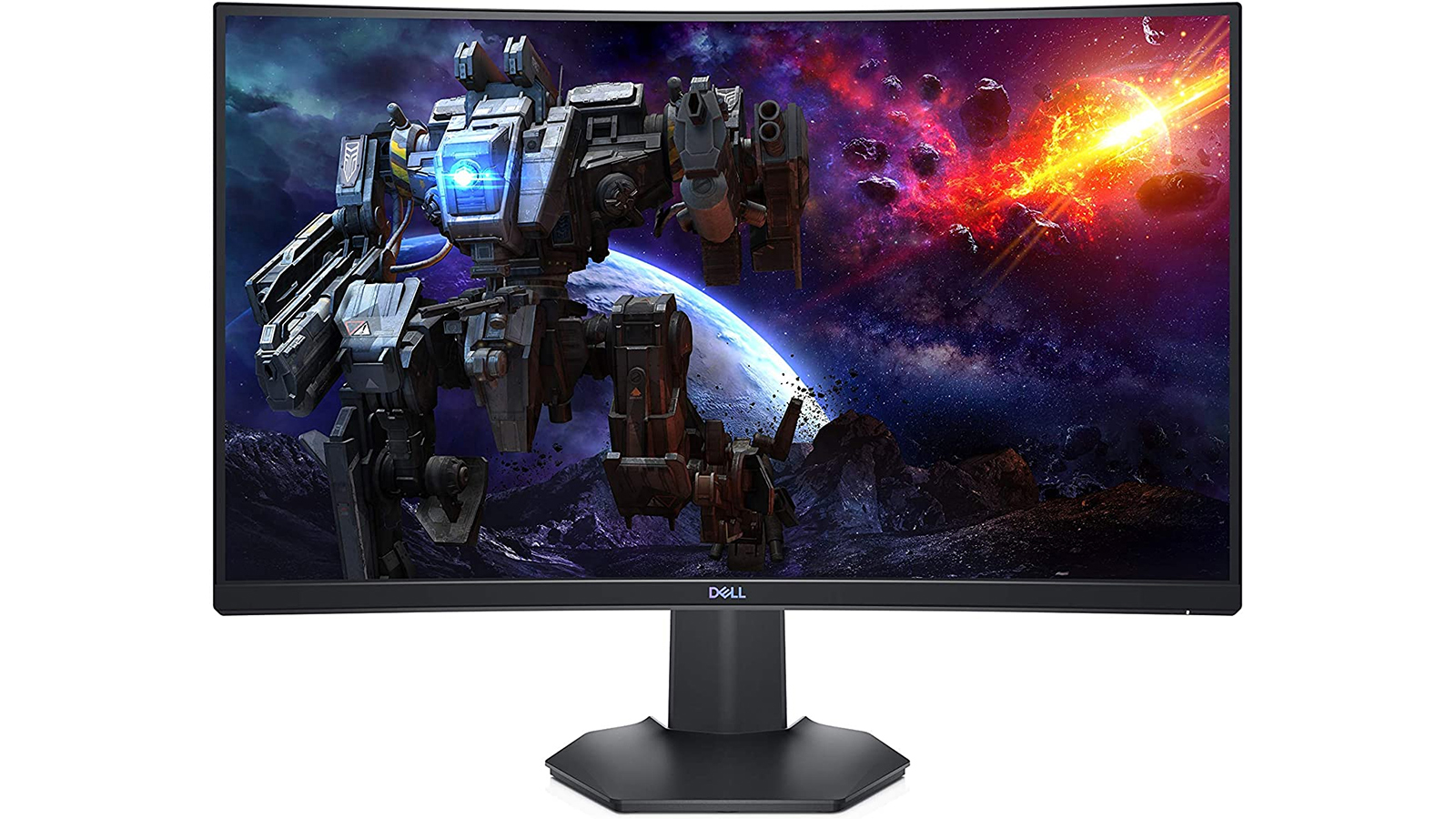Should I buy the Samsung Odyssey Neo G9 curved gaming monitor?
Get up to speed on everything you need to know about this stunning monitor


Take a look at our best curved gaming monitor guide and you'll see the Samsung Odyssey Neo G9 gets a very good write-up: so is this the curved monitor that's right for you? And does it have enough about it to be worth a significant chunk of your hard-earned savings? Here we'll tell you everything you need to know about this giant curved gaming monitor.
As with any potential hardware purchase, you need to think long and hard about how you're going to be using it and what features are most important to you. Spending a lot of money can be justified – as long as you're going to get enough value in return (and in the case of the Samsung Odyssey Neo G9 monitor, you get an awful lot back in return).
There's no doubt that the Odyssey Neo G9 from Samsung is going to be more than a lot of people need when it comes to a new gaming monitor. But for a certain subset of buyers out there we think it's the best curved gaming monitor out there – and this in-depth article on the giant monitor should help you figure out whether or not you're part of that club.
Should I buy the Samsung Odyssey Neo G9 curved gaming monitor?

Before you decide if you want to buy the Samsung Odyssey Neo G9, you need to work out whether a curved gaming monitor is right for you in the first place. These are expensive, high end pieces of kit, and in order to justify the cost you're going to have to make sure that you need all of the features that they offer – there are plenty of other great monitors you can get for less if you can make do with something smaller.
Then there's the Samsung Odyssey Neo G9 in particular, which is larger and pricier and packed with more features than most of the other models in this category. It's going to dominate whatever desk you put it on, measuring 49 inches from corner to corner, and coming with a 32:9 aspect ratio. Even widescreen movies are going to have black bars down the sides of the screen.
You're going to need to be an avid gamer to want to splash out on the Samsung Odyssey Neo G9, and it's worth double-checking that the games you play most often actually support a super-widescreen mode like the one you'll get here. For those who can make use of its formidable list of features and specs though, we think this curved gaming monitor is an excellent choice, even with the high cost involved.
What are the specs of the Samsung Odyssey Neo G9 curved gaming monitor?

Almost every Samsung Odyssey Neo G9 spec is enough to raise an eyebrow or two. Let's start with the most essential ones: this is a 49-inch monitor with a 32:9 aspect ratio, and it runs at a native resolution of 5120 x 1440 pixels – that's actually the equivalent of two standard widescreen monitors stuck together. If you want as much screen space from left to right as possible, then the Odyssey Neo G9 certainly fits the bill.
Get all the latest news, reviews, deals and buying guides on gorgeous tech, home and active products from the T3 experts
When it comes to the specs that gamers are going to be particularly interested in, we've got a 240Hz refresh rate here, as well as a 1ms response time. Add in the integrated support for the Nvidia G-Sync and AMD FreeSync Premium Pro standards, and you're guaranteed a gaming experience with the minimum of lag and flicker. You get a typical brightness of 420 nits and a static contrast ratio of 1,000,000:1, which is all very impressive.
For the purposes of comparing this monitor against other curved gaming monitors, you should know that the curvature is 1000R and the viewing angles are 178 degrees both horizontally and vertically. HDR is supported too. As for the key dimensions, the Samsung Odyssey Neo G9 measures a mammoth 1149.5 mm x 537.2 mm x 418.3 mm (45.26 inch x 21.15 inch x 16.47 inch) when set up, and weighs 14.5 kg (32 lbs).
What are the best features of the Samsung Odyssey Neo G9 curved gaming monitor?

If you're going to pick the Samsung Odyssey Neo G9 as your next curved gaming monitor, then it's primarily going to be because of the size of the screen, its ultra-widescreen aspect ratio, and the quality of the picture it's able to display. The monitor uses the same quantum mini LED technology used in Samsung's top-end TVs, and it shows in the vividness and crispness of the display.
Let's not forget the design of the Samsung Odyssey Neo G9 curved gaming monitor either, because this model is something of a stunner, finished in while plastic with a sturdy stand. The central circle where the stand connects can be lit up and customised, so you can have whatever colours you like illuminating the monitor from behind. It really adds to the sense that you've got a professional gaming monitor here.
The design allows for plenty of adjustments when it comes to tilting and swivelling too, and another interesting feature worth talking about is the picture-in-picture and picture-by-picture functions: if you have two input devices connected simultaneously, you can display them together on the Samsung Odyssey Neo G9 in a number of ways (so you could watch TV while also editing a spreadsheet, for example).
What else do I need to know about the Samsung Odyssey Neo G9 curved gaming monitor?

While we've focused on gaming in this write-up, the Samsung Odyssey Neo G9 can of course handle everyday computing too, as well as connecting to all your other devices (like media streaming dongles). The question is whether you want to pay all this money for a screen to do general web browsing and movie watching on – you really need to be a keen gamer to justify the cost of this particular model.
The display is going to set you back a significant amount, but that's perhaps the only downside we can find when it comes to the Samsung Odyssey Neo G9. You should also note that it doesn't come with any integrated speakers, so you're going to have to rely on a separate set of speakers to get any sound out of your gaming rig – factor this in when you're working on a budget and a layout for your desk.
In terms of the connectivity options offered by the monitor, you're well covered: one DisplayPort 1.4 port, two HDMI 2.1 ports, two USB-A ports, one USB-B port and a 3.5 mm headphone jack for good measure. Bear in mind though that only the DisplayPort socket supports the maximum 240Hz refresh rate offered by the monitor, so that might influence your decision whether or not to purchase this particular model.
What are the alternatives to the Samsung Odyssey Neo G9 curved gaming monitor?

If you take a look at the comprehensive best curved gaming monitor guide that we've put together, you'll see that there are several top-quality alternatives to the Samsung Odyssey Neo G9. Most of the alternatives are going to cost you less money, but you might also find that they don't quite hit the heights of the Samsung model in terms of the display quality or the number of features that you get.
One curved gaming monitor that we would very much recommend is the MSI Optix MPG341CQR: it brings with it a 34-inch display, a curvature of 1800R, and an aspect ratio of 21:9 – the screen resolution is 3440 x 1440 pixels. With this screen there's a refresh rate of 144Hz and a response time of 1ms, so it's very much suitable for gamers. If you want something a little smaller than the Samsung model, it's worth a look.
Then there's the Dell S2721HGF (pictured above), which is really at the other end of the spectrum to the Samsung Odyssey Neo G9 in terms of size, price, and just about everything else. The screen here measures 27 inches, you get a curvature of 1500R, and the aspect ratio is 16:9 (there's a 1920 x 1080 resolution here). With a refresh rate of 144Hz and a 4ms response time it's still a great choice for gamers if you want something more affordable (and that can fit into a smaller space on your desk).
- We've listed the very best 4K monitors
Dave has over 20 years' experience in the tech journalism industry, covering hardware and software across mobile, computing, smart home, home entertainment, wearables, gaming and the web – you can find his writing online, in print, and even in the occasional scientific paper, across major tech titles like T3, TechRadar, Gizmodo and Wired. Outside of work, he enjoys long walks in the countryside, skiing down mountains, watching football matches (as long as his team is winning) and keeping up with the latest movies.
